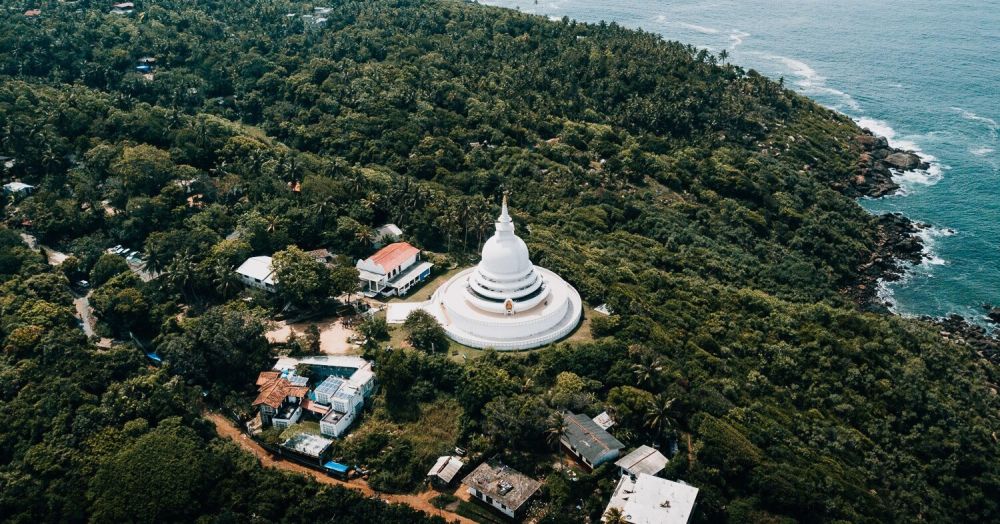

The Japanese Peace Pagoda in Galle is a beautiful symbol of peace located on Rumassala Hill, just outside the city of Galle in Sri Lanka. This splendid white stupa was built by Japanese Buddhist monks from the Nipponzan-Myohoji Order and is one of many peace pagodas around the world intended to inspire harmony among all races and creeds.
Construction of the Galle Peace Pagoda began in 2002 and it was consecrated in 2005. It offers panoramic views of Galle Bay and the Indian Ocean, making it not only a spiritual haven but also a beautiful vantage point for visitors. The pagoda was constructed as part of a wider peace movement initiated by Nichidatsu Fujii, a Buddhist monk who was deeply inspired by Mahatma Gandhi and his non-violent approach to resolving conflict.
Since its construction, the Peace Pagoda has become an important stop for travelers exploring the southern coast of Sri Lanka. Initially, the tourism in Galle was focused primarily on the Dutch Fort, a UNESCO World Heritage site. However, as word of the tranquil beauty of the Peace Pagoda spread, it drew in visitors looking for a spiritual respite from the bustling city life.
The influx of tourists steadily increased after the end of the Sri Lankan Civil War in 2009, as global travelers sought to rediscover the island’s cultural landmarks and serene landscapes. The Japanese Peace Pagoda contributed to the diversification of Galle's tourism offerings, providing a spiritual counterpart to the region's historical and beach attractions.
In recent years, there has been a noticeable shift in the tourism industry within Galle, moving towards more responsible and sustainable practices. Travelers are increasingly seeking out experiences that allow them to connect with local cultures and environments in a mindful way. The Japanese Peace Pagoda perfectly aligns with this trend, offering a place of quietude and reflection away from over-crowded tourist spots.
Eco-tourism and cultural tourism are on the rise, and visitors to the Peace Pagoda often combine their visit with hikes in the surrounding Rumassala Sanctuary, where they can experience the local flora and fauna, and learn about the area’s unique biodiversity. Yoga and meditation retreats near the pagoda have also become popular, capitalizing on the serene environment to promote personal well-being.
Moreover, the developing trend of digital detox vacations finds a welcoming venue in the peaceful environs of the Peace Pagoda. Visitors are encouraged to disconnect from their electronic devices and reconnect with their inner selves amidst the soothing presence of this monument to peace.
Those who wish to visit the Japanese Peace Pagoda are welcomed throughout the year. The best time to go is during dawn or dusk when the serene landscape is bathed in soft light, and the atmosphere is most conducive to meditation or quiet contemplation. Festivals related to the full moon, known as Poya Days, see local Buddhist ceremonies at the pagoda, which can provide a unique cultural insight for tourists.
Regardless of one’s spiritual beliefs, the Japanese Peace Pagoda stands as a beacon of peace and a testament to the healing power of sacred spaces. Its rise as a tourist destination in Galle underscores the global desire for travel experiences filled with meaning, serenity, and a connection to the greater world community.